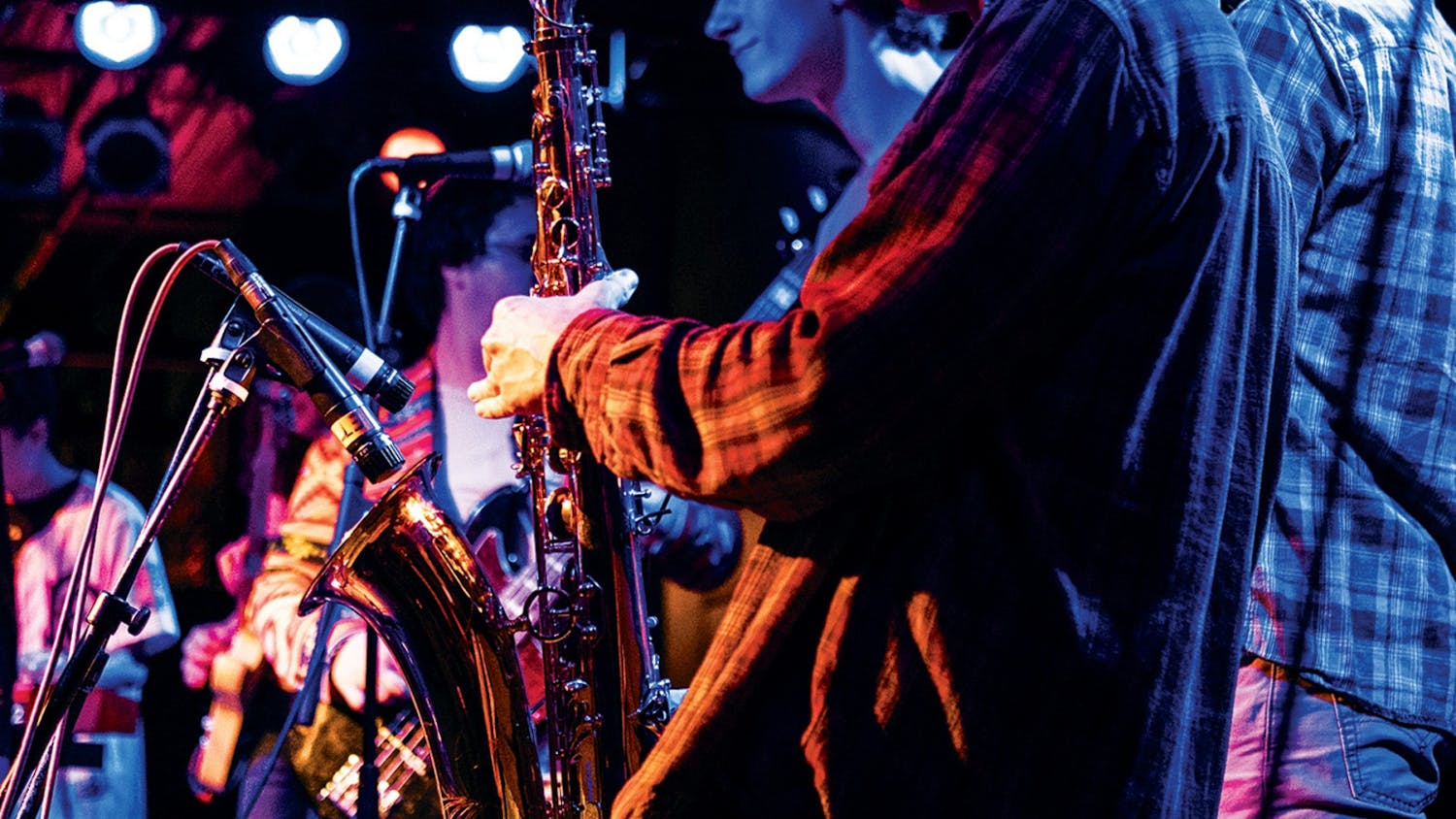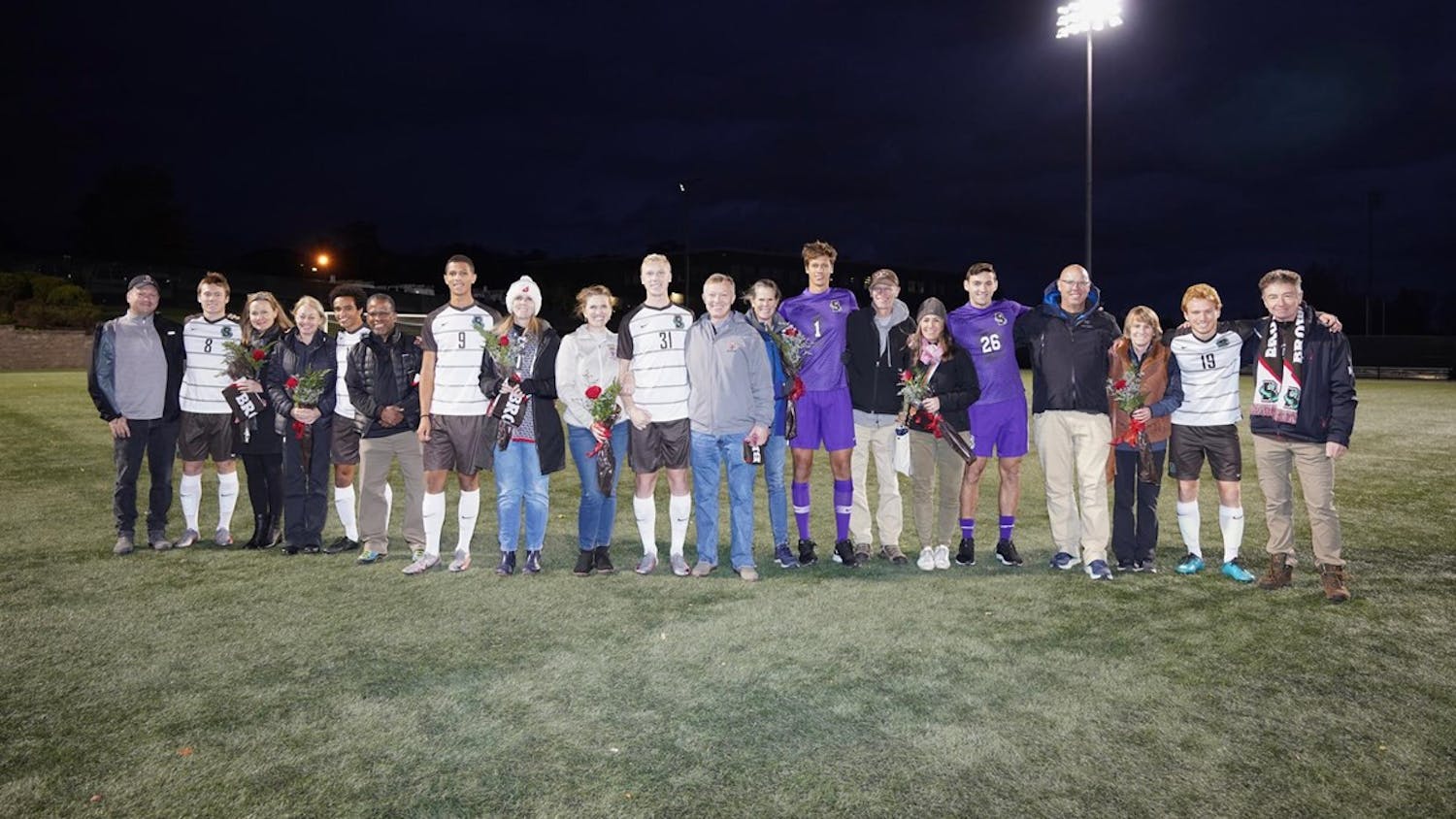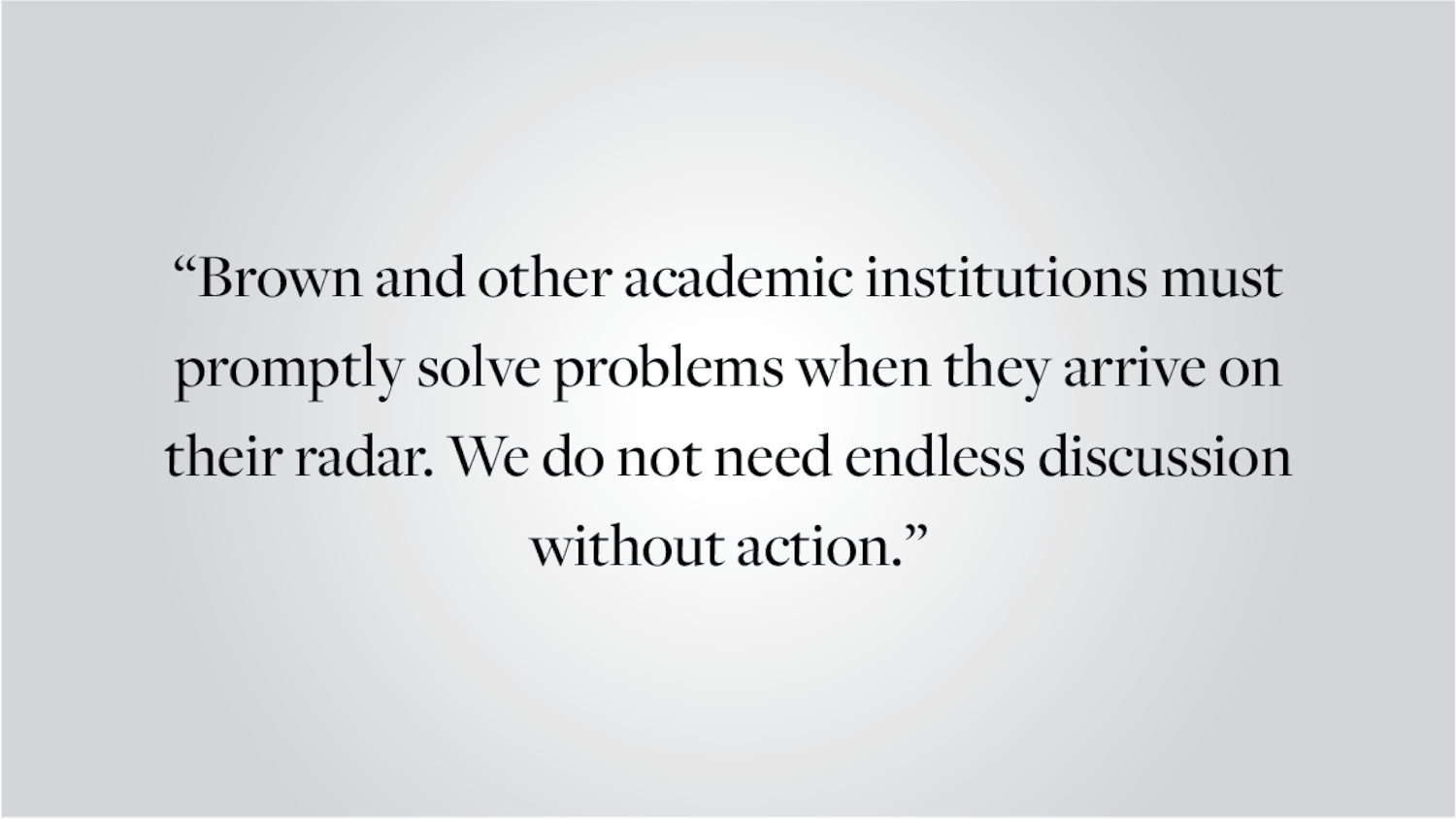Around campus he is normally called Jon — just Jon. But on Monday and Wednesday nights in Steinert Practice Center, he becomes “grad student Jon” or “GSJ.”
The University Chorus lovingly gave Jon Estrada GS this nickname after too many Jons joined the bass section of the chorus and choral director Fred Jodry needed a way to distinguish each of them. Despite the identifier, “no one really sees people as like what year you’re in,” Estrada said. “It tends to not be incredibly important.”
Estrada is one of a handful of graduate students who belong to predominantly undergraduate organizations on campus. From singing to soccer to cheer, these graduate students have gone where most graduate students dare not venture — undergrad campus life.
Seeking a different scene
Despite the presence of nearly 2,000 graduate students on campus, there are only around 15 graduate student groups, said Timothy Shiner, director of Student Activities and the Stephen Robert ’62 Campus Center.
Because graduate students “are at different phases of their lives,” they often do not have the time or interest to participate in activities outside of their immediate departmental studies, which may be the reason there is a relatively low number of graduate student-run clubs, Shiner said. He added that because there are fewer graduate students than undergraduates, the budget for graduate extracurricular activities is “significantly smaller” than that for undergraduate clubs.
The array of undergraduate extracurriculars can therefore be incredibly enticing to a graduate student who wants to explore activities outside of his or her department, said Keila Davis GS, Graduate Student Council president.
“If you are active as an undergrad, you can’t go to grad school and not be involved in school,” Davis added.
Shiner said graduate students often think it is difficult to join undergraduates’ ranks, though in almost all cases a graduate student’s request to join an undergrad group will be granted.
Graduate students might be denied entry if the undergraduate group has a special clause in its mission statement that requires a certain percentage of undergraduate members, Shiner said.
“It would be more difficult to join, say, an a cappella group, but graduate students joining political interest groups or service groups is very typical,” Shiner said.
Guts to go undergrad
Varsheeni Raghupathy GS is a member of the small but passionate cohort of graduate students that has infiltrated the undergraduate extracurricular scene. Raghupathy had always been part of a sports team as an undergraduate in India, so she went to club basketball tryouts at the start of her first semester. But upon entering the basketball court, she was shocked by the players who were “five times (her) size,” she said.
Raghupathy went out on a limb and instead decided to give basketball cheerleading a shot.
“We didn’t even have cheerleading in India,” said Raghupathy. “I’ve danced before. But cheerleading is not the same as dancing, no matter what.”
The first time Raghupathy was asked to do a handstand, she did not know what it was. But the team was happy to teach her cheerleading tricks, starting from the basics.
She began cheering at sports games ranging from ice hockey to football to basketball and learned the ins and outs of American athletics — at her first ice hockey game she did not know when to cheer since she did not know the rules.
Raghupathy also simultaneously pursued her love of dance by joining the Brown Badmaash Dance Company.
“It didn’t make a difference because I was a grad student,” Raghupathy said. “It was cool that I could fit in as if I were an undergrad.”
Other graduate students also have continued activities they long participated in by joining University clubs.
Milton Ochieng GS, a gastroenterology fellow at Warren Alpert Medical School, plays Brown club soccer. As a medical student at Vanderbilt University, Ochieng participated in the undergraduate-run club soccer team, so he was not nervous about being older than his teammates at Brown.
One of the perks for Ochieng, like for Raghupathy, is connecting with undergraduates. “I get to make more friends. I get to make more Facebook friends,” he said.
More Facebook friends turned out to be helpful when when he spent time in China over the summer. After he posted a status about being “all linguistically challenged” while abroad, a friend from the Vanderbilt undergraduate team commented, he said. It turned out his friend was also in the country, and they were able to meet up in Shanghai.
Playing alongside Ochieng on the club soccer team is Simon Freyaldenhoven GS. He said he wanted to pick up soccer again when he enrolled at Brown and heard about the team through another graduate student member.
“Honestly, I’m not sure the entire team knows I’m a grad student,” Freyaldenhoven said, adding that at 23 he is only a couple of years older than most of the undergraduates on the team.
Overlap in graduate and undergraduate life at Brown can be “mutually beneficial,” Shiner said.
Freyaldenhoven said in the United Kingdom — where he received a bachelor’s degree — there is less divide between undergraduate and graduate students and he wishes it was the same way in the United States.
“It’s nice to have some interactions with younger people and undergraduates,” he said.
Raghupathy said her graduate peers were surprised but excited when they discovered her cheerleader alter-ego.
Her graduate classmates attended a basketball game and were shocked to see her on the sidelines cheering. They continued attending games, now with her as the main attraction. One of her professors even made an appearance at a game to cheer for her as she cheered on the basketball players. She said her graduate student peers were pleased to see her growing circle of friends, which included undergraduate cheerleaders and dancers.
Raghupathy said she learned about the “completely different” American college party scene from her cheerleader friends. After playing “never-have-I-ever” with the cheerleaders, “all my secrets came out,” she said.
Bridging the divide
Many graduate students who have had beneficial experiences participating in undergraduate-run clubs have suggested that Brown expand the forums for these sorts of interactions.
Kelly MacDonald MD ’15, a member of the Brown running club, said she would like to see the University continue some club activities over the summer. The running club, like most other campus organizations, does not meet in the summer, though many undergraduates and medical students are still on campus.
Davis said she was considering having undergraduate clubs present at the Graduate School convocation in September in a manner similar to an activity fair.
“We are definitely allowed to join undergraduate groups, and vice versa,” she said. “I wish there were more crossover between us though.”
Estrada said his undergraduate experience at MIT exposed him to mostly engineering concentrators, so the opportunity to meet young students whose interests are more diverse was “relaxing and rewarding.”
“In the chorus I’ve gotten to interact with all these people studying these really great subjects,” Estrada said. “I don’t think I would have ever got that opportunity if I were just sitting up at lab with the other people in my major.”
ADVERTISEMENT




